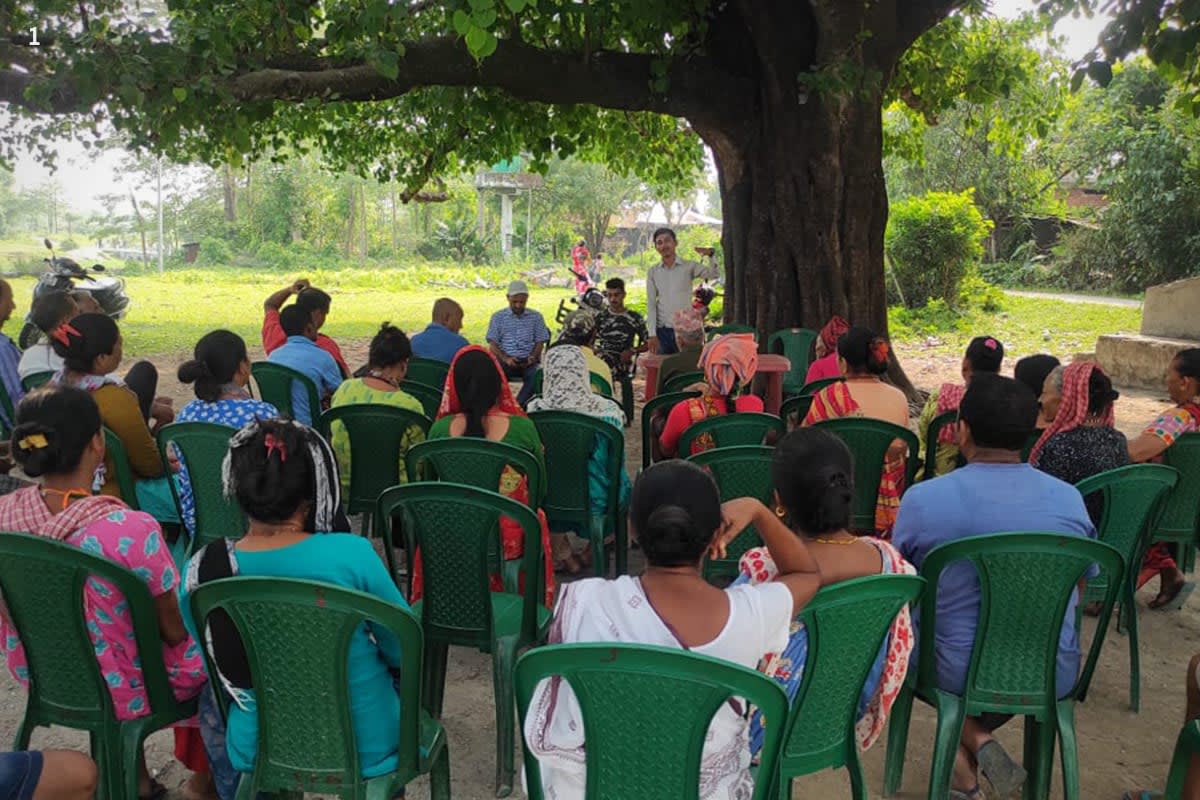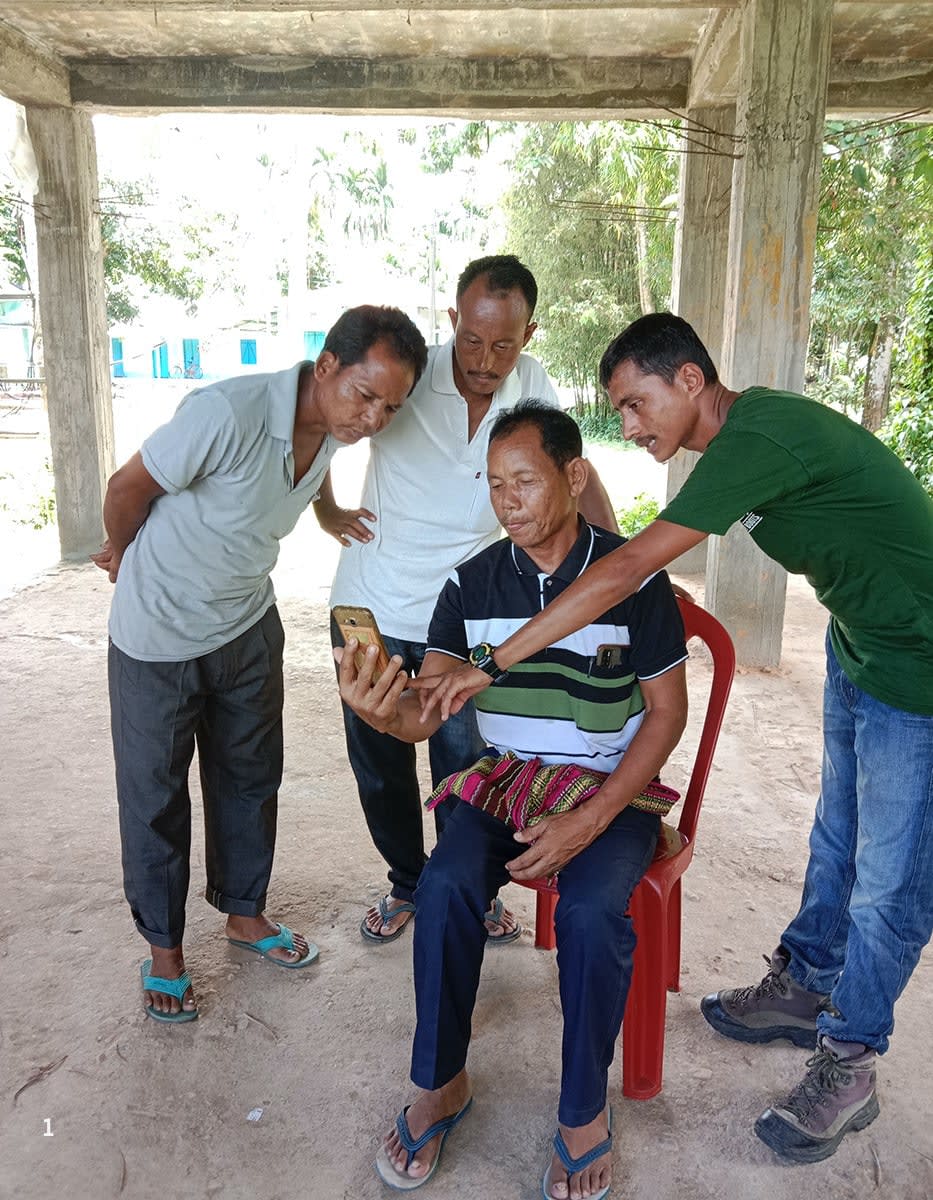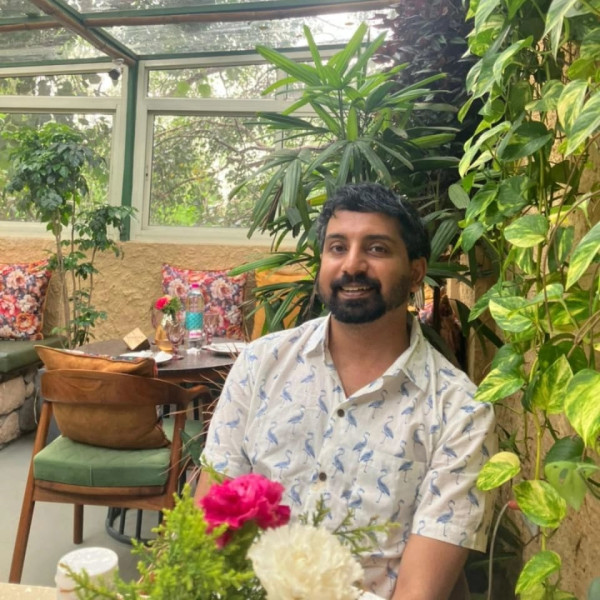 Listen to this article
•
15:34 min
Listen to this article
•
15:34 min
An athletic young man climbed into my safari jeep as we headed from Chalsa towards the Chandrachur watchtower inside Gorumara National Park in northern West Bengal. His khaki-green uniform divulged that he was my guide for the morning safari. When I asked him his name, he replied, “Amir Kumar Chettri,” in his soft-spoken manner, unaware that I hadn’t registered it under the drone of the jeep’s engine. Later that evening, I was startled when a local conservationist I was scheduled to meet bore an uncanny resemblance to the guide. Sensing my bewilderment, a smiling Amir assured me that it was indeed him I had met that morning.
In addition to being a tourist guide, Amir is Project Leader with Sanctuary Nature Foundation’s Mud on Boots Project, a research assistant with the Coexistence Project, a skilled ethnobotanist, an excellent community mobiliser, and a local conservation leader. In addition, his knowledge of the park is impressive, and he has exceptional wildlife-spotting skills.
The 32-year-old grew up in Panijhora forest village, adjacent to Chapramari Wildlife Sanctuary and the territorial forests of Jalpaiguri Forest Division in northern West Bengal. His casual interest in wildlife began while working as a tourist guide in 2007. “The forest department was short-staffed at the time. I was 17 years old, the youngest among the five chosen,” Amir said.

Cover photo: Amir Kumar Chettri, holding a mushroom in this image, grew up in Panijhora forest village, adjacent to Chapramari Wildlife Sanctuary in West Bengal. His knowledge of the sanctuary’s flora is unparalleled. Photo courtesy: Neyi Jamoh
Since then, Amir has worked with the forest department in fire management, plantation activities, conducting wildlife censuses, patrolling the sanctuary, and participating in anti-poaching activities in the forest surrounding his home. “Thanks to the patrolling done by the department every day, there has been no fire in Chapramari for many years. But the risk is always there. We [villagers] are always on hand in case of an emergency,” he mentioned.
Meeting forest department staff, conservationists and students increased his interest and knowledge manifold. He assisted the University of Chicago’s K Supriya with her PhD project on the interaction between birds and ants in the Eastern Himalayas from 2014 to 2016. “Initially, I was stumped. She used to hit leaves with branches and collect insects. I used to wonder what she was doing. It took me around a month to understand, and slowly, I began to learn,” revealed Amir.
Today, Amir lends his knowledge and support to several researchers working in the landscape. Priyanka Das, a consultant with the Eastern Himalaya Program of the Nature Conservation Foundation, was all praises for her former colleague at the Coexistence Project. “My MSc dissertation on dry season forage selection by elephants in a multi-use landscape materialised only because of him. We used to follow fresh elephant trails to understand what they had eaten. Often I could not see the trails, especially in tea gardens during the dry season, but he could. He would tell me the names of the plants the elephants were feeding on. His indigenous knowledge about biodiversity is unparalleled, and we are currently developing a plant book for the region with the help of the Sanctuary Nature Foundation,” said Priyanka.
At the Coexistence Project, which aims to foster safer shared spaces between people and wildlife in West Bengal, Amir oversees fieldwork such as setting up trail cameras, maintenance of solar fences, and community engagement. He has assisted in estimating the density of leopards in tea estates, conducted sign surveys to estimate the occupancy of leopards and elephants in the landscape, and monitored collared individuals. “Amir has been a core member of the Coexistence Project since 2017. He has in-depth knowledge of the local flora and fauna and has guided several Masters’ students in the past with their field projects. Amir is a Sanctuary Mud-on-Boots awardee and a shining example of the community-led conservation model,” said Aritra Kshettry, team leader of the Coexistence Project.
As a collaborative effort between the Coexistence Project and Sanctuary Nature Foundation’s Mud on Boots Project, Amir led the installation of a three-kilometre-long solar fence around his village in 2021. The fence comprises galvanised wires linked by bamboo and PVC poles measuring around 6.5 m. It is powered by a battery connected to a solar panel. Wild animals receive a mild shock when they come in contact with the wire, deterring them from entering agricultural fields and thus reducing negative interactions between humans and wildlife. Along with members of the farming community in his village, Amir monitors and maintains the fence.
One of the key learnings that Amir had after attending a training programme in Assam conducted by Arjun Kamdar, WWF-India in 2021 was that community involvement and fence maintenance is most important. He hopes to convince residents of nearby villages to build similar fences if the pilot project owned by the community in his village is successful. A firm believer in the spirit of collaboration, he maintained that community ownership is key to the project’s success: “All villagers in Panijhora come together to hold regular meetings about fence maintenance and re-erect fence poles if elephants fell them. We have been able to keep wild boar that damage our crops at bay ever since the fence was erected and are telling people from other villages that they too can take follow our example.”
Amir is working to mitigate the rising number of negative interactions between humans and elephants in the landscape by conducting awareness programmes. According to him, twelve elephants were electrocuted in the past two years after touching electric fences erected by farmers to protect their crops and homes. His fluency in Rajbanshi, Sadri, Nepali, Bengali and Hindi proves useful in community outreach. “The forest department and villagers tend to blame each other if an incident occurs. The villagers say that the forest department reached the location late, while the department tells the villagers that they shouldn’t have gone to the area in the first place. This is where my awareness work comes in, and I feel good if I can make people conscious of the protocols to follow,” said Amir.
Amir believes his work is making a difference. He cited the example of the Baradighi tea estate adjacent to Gorumara: “There used to be a lot of leopard attacks on humans because the forest is very close to the estate. We told tea workers to clap or play music on their mobile phones while they moved through the estate. Since we started our awareness programme 3-4 years ago, there has been only one incident in Baradighi.”

Even after seeing his efforts bear fruit, Amir remains a realist. “The situation has improved from earlier when people used to harm animals. But incidences of conflict do happen. It is not as if conflict will not occur because we are raising awareness. But it will certainly reduce in the future if we continue our work,” he said.
Not one to shy away from challenges, Amir doesn’t have a set routine for the day, which often involves long hours in the field. His love for the job keeps him going despite his family’s apprehensions about the dangerous nature of his work. “No work is easy. It is essential to work hard. I cannot leave my work saying I have done enough. If I do that, then how will I learn? And I don’t need to meet sensible people everywhere I go. It does happen that one or two will cause trouble,” expressed Amir.
I run into Amir again on my last day at the Chapramari Wildlife Sanctuary. He was with a group of tourists at the Chapramari watchtower, waiting patiently for wild animals to turn up at a salt lick maintained by the forest department. He noticed one of the tourists in another group throwing his weight around and complaining about the lack of wildlife sightings on the safari. The otherwise calm young man lost his cool when the tourist spoke rudely to another guide and immediately came to his colleague’s defence. He shut the tourist down with his coherent argument in seconds, impressing everyone assembled. No animals showed up that evening, yet I wasn’t disappointed. I bid Amir adieu, glad to have made my acquaintance of a community leader who walks the talk.









